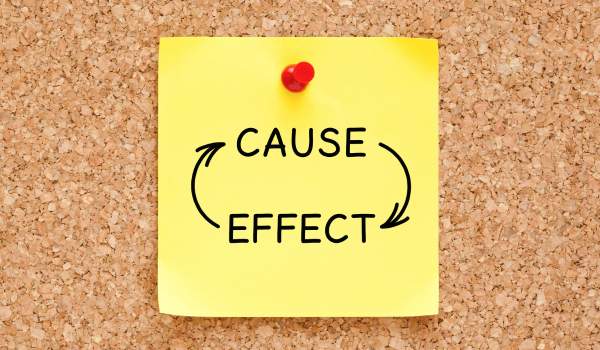If your water suddenly started tasting better after you swapped in a new filter, chances are a carbon block is doing the heavy lifting behind the scenes. These dense filters don’t just look serious — they’re built to pull out the stuff that slips past cheaper options.
While they’re often overlooked in favor of flashier systems like reverse osmosis, carbon block filters have a quiet reputation for tackling chlorine, heavy metals, and even trace pharmaceuticals — all while keeping water pressure mostly intact.
Let’s break down how they’re made, what they actually remove, and when it makes sense to use one in your home.
⚡ Quick Takeaways
- 🧲 What it is: A solid block of activated carbon used to trap chlorine, VOCs, and other nasties
- 💨 How it works: Water is forced through ultra-fine pores — no shortcuts, no channeling
- 🚿 Why it matters: Removes more contaminants than granular carbon, with fewer leaks
- 🕐 Lifespan: Most last 3–12 months depending on use, water quality, and size
- ✅ Safety: Look for NSF-certified filters to ensure performance and purity
⚖️ Granular vs. Block Carbon Filters — What’s the Difference?

Activated carbon comes in two popular forms — loose granules and solid blocks. Both clean up your water nicely, but the way they work is where the real difference shows.
- 💡 Granular Activated Carbon (GAC): This is the crumbly kind you’ll see in most refrigerator and faucet filters. It flows fast and does a decent job — but can miss some smaller stuff.
- 🧱 Carbon Block: These are tightly packed, solid filters. That density forces water to interact with more surface area — catching smaller, more stubborn contaminants.
🧠 Good to know: If your water still tastes off or your chlorine levels linger, your filter might be due for an upgrade — carbon block could be the boost you need.
👉 Read more about how activated carbon filters work.
🌀 Why Filter Density & Flow Direction Matter

Here’s where things get interesting. How densely packed the carbon is — and how water moves through it — makes a big difference in performance.
- 🧱 Density matters: Granular activated carbon (GAC) has tons of surface area — a single pound can have 35+ miles of pores! But even that pales in comparison to block carbon, which has up to 10x more density in the same size. That means more contact time with contaminants — and better filtration.
- 🌊 The “channeling” problem: In GAC filters, water naturally flows wherever resistance is lowest. Over time, it carves out little “rivers” or channels, bypassing chunks of media. That means some water skips the cleaning step altogether.
- 🔒 Where carbon blocks shine: Carbon blocks force water to pass evenly through the entire structure. There’s no shortcut — which means every drop gets properly filtered.
🧠 Pro Tip:
If your filter seems to “wear out” fast, channeling could be the culprit. Upgrading to a carbon block filter may solve both the performance and lifespan issues in one go.
🧪 What Are Carbon Block Filters Made Of?

Carbon block filters start with natural, carbon-rich materials — think coconut shells, wood, or bituminous coal. Once carbonized and activated, the material is pressed into dense blocks using one of two methods:
| 🛠️ Manufacturing Method | 🔍 How It Works | ⚖️ Pros |
|---|---|---|
| Extrusion | Ground carbon and binder are pressed through a die, then cut into segments | Consistent size, great for high-volume production |
| Compression Molding | Carbon mix is shaped in molds using heat and pressure | Denser blocks, less filler — often more efficient per inch |
📌 Good to know: Compression-molded blocks use less filler, which means more carbon per inch — and better contaminant reduction per cartridge.
🧪 Carbon Filters Face Off: Block vs. Granular

Before you choose a filter, it helps to see how carbon block stacks up against granular carbon at a glance. Here’s a side-by-side breakdown:
| Feature | Carbon Block Filter 🧱 | Granular Carbon Filter 🧲 |
|---|---|---|
| Structure | Compressed solid block with uniform pores | Loose granules with uneven gaps |
| Contaminant Removal | Higher efficiency — removes more VOCs, lead, and small particles | Effective but may miss finer particles due to channeling |
| Flow Rate | Slower due to tighter structure | Faster — ideal for high-flow systems |
| Micron Rating | Typically 0.5–5 microns | Usually 10+ microns |
| Best For | Point-of-use systems (under sink, pitchers, etc.) | Whole-house and refrigerator filters |
💡 Pro Tip: If your main goal is taste and chemical reduction in drinking water, carbon block is a no-brainer. But if you’re filtering larger volumes (like in a whole-house system), a high-quality granular filter may be more practical.
🔬 What’s a Micron Rating (and Why It Matters)

You’ll often hear the term “micron rating” tossed around with filters — but what does it actually mean?
A micron is just a fancy word for a tiny unit of measurement — one-millionth of a meter. So, when a carbon block filter says it catches particles down to 0.5 microns, that means it can trap contaminants half the size of a red blood cell. Seriously tiny.
But here’s the catch: not all filters are rated the same way — and not all micron claims are meaningful unless you know how they’re tested.
📏 Nominal vs Absolute Ratings
- Nominal rating: The filter catches most particles at or above the stated size (think: 85–90%).
- Absolute rating: More rigorous. It blocks at least 99.9% of particles at the rated size — the gold standard for sensitive filtration needs.
💡 Pro tip: If your water looks clean but still tastes off or your shower pressure dropped unexpectedly, a filter with a tighter micron rating might be blocking more than just bad stuff — it could be slowing your flow, too.
🚱 Can Carbon Block Filters Make Water Safe to Drink?

Carbon block filters do a great job of making your water look, smell, and taste better. They cut out chlorine, sediment, and a whole lot of chemical leftovers from the tap.
But when it comes to making water truly safe from bacteria and viruses? That’s where they start to fall short.
They’re excellent at reducing:
- 🧪 Chlorine
- 🌬️ VOCs and chemical residues
- ⚙️ Rust and particulates
- ☣️ Some heavy metals
But for microbial safety, like what you’d want in untreated well or surface water, you’ll need backup from a UV system or a reverse osmosis filter.
💡 Pro tip: If you’re filtering city tap water, a carbon block filter usually does the job. But if your supply is questionable — or from a private well — don’t skip microbial protection.
♻️ Are Carbon Block Filters Safe & Eco-Friendly?
Carbon block filters aren’t just effective — they’re also safe and surprisingly sustainable.
The carbon used in these filters typically comes from natural sources like coconut shells or wood. Once activated through high heat or chemical processes, it gains powerful adsorptive properties. While chemical activation may leave trace residues, certified filters are rigorously tested to ensure they don’t leach anything harmful.
- ✅ NSF-certified filters, for example, are independently tested to confirm they remove contaminants without adding new ones. If you see NSF Standard 42 or 53, you’re in good hands.
- ♻️ As for eco-friendliness? Carbon filters are made from renewable materials — and many can be recycled through thermal reactivation processes. Some brands, like Brita, even offer recycling programs for spent cartridges.
🧃 Good to know: Not every filter is recyclable, but picking a sustainable brand — and tossing used cartridges in the right bin — can seriously cut down your household waste.
💸 How Long Do Carbon Block Filters Last?
It depends. Filter lifespan isn’t one-size-fits-all — it’s tied to what’s in your water and how much you use.
Generally, you’ll get 3–12 months out of a carbon block filter. That’s a wide range, but a few factors help narrow it down:
- Water Quality: If you’re filtering murky or chemical-heavy water, you’ll wear through filters faster.
- Daily Use: More gallons per day = more work for the filter.
- Filter Size & Type: Bigger blocks (and better carbon) typically last longer.
- Pretreatment: Using a sediment pre-filter can spare your carbon block from doing all the heavy lifting.
🧠 Good to know: If you’re not sure what’s flowing through your tap, check out our water filter comparison guide — it can help you figure out which system (and filter change schedule) makes the most sense for your home.
⚠️ Any Downsides to Carbon Block Filters?
They’re powerful, but not perfect.
Here’s where they can fall a little short:
- 💰 Price: Carbon block filters cost more than their granular cousins — sometimes up to 50% more per cartridge. But because they’re more efficient and last longer, the overall cost difference isn’t as steep over time.
- 🚿 Flow Rate: Water moves more slowly through a dense carbon block than it does through loose granules. That’s why you’ll rarely see carbon blocks in whole-house systems — they’re better suited for smaller point-of-use setups like pitchers, countertop systems, or undersink filters.
🧠 Good to know: If your shower pressure dropped after installing a new system, chances are it’s the filter slowing things down. A granular carbon option may be a better fit for high-flow applications.
⚖️ Carbon Block vs Reverse Osmosis — Which One’s Better?
Both filter types have their strengths — but they’re built for different jobs.
- 🧲 Carbon Block Filters excel at removing chlorine, VOCs, bad tastes, odors, and even some heavy metals. They’re affordable, low-maintenance, and don’t strip out healthy minerals.
- 💧 Reverse Osmosis (RO) goes deeper — filtering out everything from arsenic and fluoride to nitrates and total dissolved solids (TDS). But it also removes minerals your body needs, wastes water, and often needs higher pressure to work properly.
🧠 Good to know: RO systems almost always include a carbon pre-filter to protect the delicate membrane — so even if you’re team RO, carbon still plays a role.
🛠️ Choosing the Right Carbon Block Filter

Not all carbon block filters are built the same — and the marketing can get real loud. Here’s how to cut through the noise:
- 🧪 Check for NSF Certification Look for filters certified to NSF Standard 42 (for taste, odor, chlorine) and Standard 53 (for health-related contaminants like lead).
- 🥥 Know the Carbon Source Filters made with coconut shell carbon offer tighter pore structure and more surface area — great for adsorbing VOCs and small organic compounds.
- 🔍 Read the Micron Rating A 0.5–1 micron rating filters finer particles, but may slow flow more than a 5-micron option. Match the micron size to your water quality and pressure needs.
- 🧾 Look for a Trusted Brand Companies like Brita and others that recycle spent cartridges are a good sign you’re getting quality — and sustainability.
🧠 Good to know: The best filter is one that matches your water. If you haven’t already, test your tap water to see what you’re really dealing with.
💭 Final Thoughts
Carbon block filters might not be the flashiest water tech out there — but when it comes to everyday performance, they’re tough to beat.
They quietly knock out chlorine, VOCs, lead, and dozens of other unwanted guests in your water. And thanks to their dense, uniform structure, they do it without channeling, without carbon dust, and without the guesswork of lower-grade filters.
If your water tastes off, or if you’re looking for a reliable step up from basic pitcher filters, a quality carbon block system can make a big difference — especially at the tap.
✅ Cleaner taste
✅ More efficient filtration
✅ Fewer replacements
✅ Eco-friendly materials
Just remember: the best filter is the one that fits your water quality, pressure, and budget. And if you’re unsure what that looks like, start here with our top-rated systems.
Your water, your rules — but let’s make it clean. 💧
 131 people found this helpful. Was this guide helpful to you?
131 people found this helpful. Was this guide helpful to you? 

